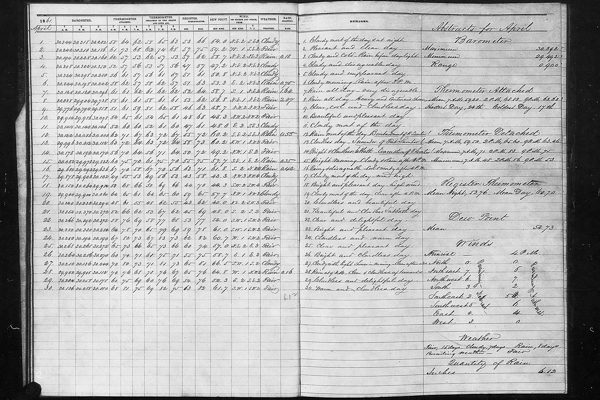History
-

Here’s an odd and interesting story about how scientists in Mussolini’s Italy used the protein casein in milk to make an artificial wool-like fiber that could be turned into clothing. This new milk fiber was dubbed lanital (a compounding of lana, meaning wool, and ital, from Italia). You can read about it and watch a…
-

Did you know that an eclipse that passed through the Southeast in 1900 helped scientists understand how weather is affected by the blocking of sunlight during the eclipse? Here is a great story about how they picked the spot to observe it and what they found from the National Centers for Environmental Information: https://www.ncei.noaa.gov/news/1900-total-solar-eclipse.
-

Here’s an interesting story from the Capital Weather Gang on Ronald Reagan’s near-disastrous Air Force One landing at Andrews AFB on August 1, 1983. A microburst hit the airport with winds of up to 149 mph just six minutes after Reagan’s plane landed. Microbursts, which once were considered to be fictitious, have been known to…
-

Most climatologists attribute the discovery of the greenhouse effect caused by absorption of terrestrial energy by carbon dioxide and other so-called “greenhouse gases” to Irish physicist John Tyndall in 1859 and the following years. According to a story in Climate Change News, “A recently digitized copy of The American Journal of Science and Arts suggests a woman…
-

Did you know that one of the world’s major repositories of climate data is located here in the Southeast in Asheville NC? Of course you did, if you read this blog regularly. The two other main ones are in Hamburg, Germany, and Obninsk, Russia, but there are several other smaller ones as well. Here’s a…
-

For those of you who like sailing and exciting stories, here is a story from Smithsonian magazine I ran across today on the Mobile Bay sailing disaster of 2015, when hurricane-force winds “swept more than 100 boaters into one of the worst sailing disasters in modern American history.” Surprisingly, it is a story I don’t…
-

Two paleoclimatologists at the University of North Carolina have found a way to track a storm—or, at least, track the average of all storms across the season—325 years in the past, according to an article in the latest The Atlantic magazine. The scientists used tree ring data from ponderosa pines in the Pacific Northwest to…